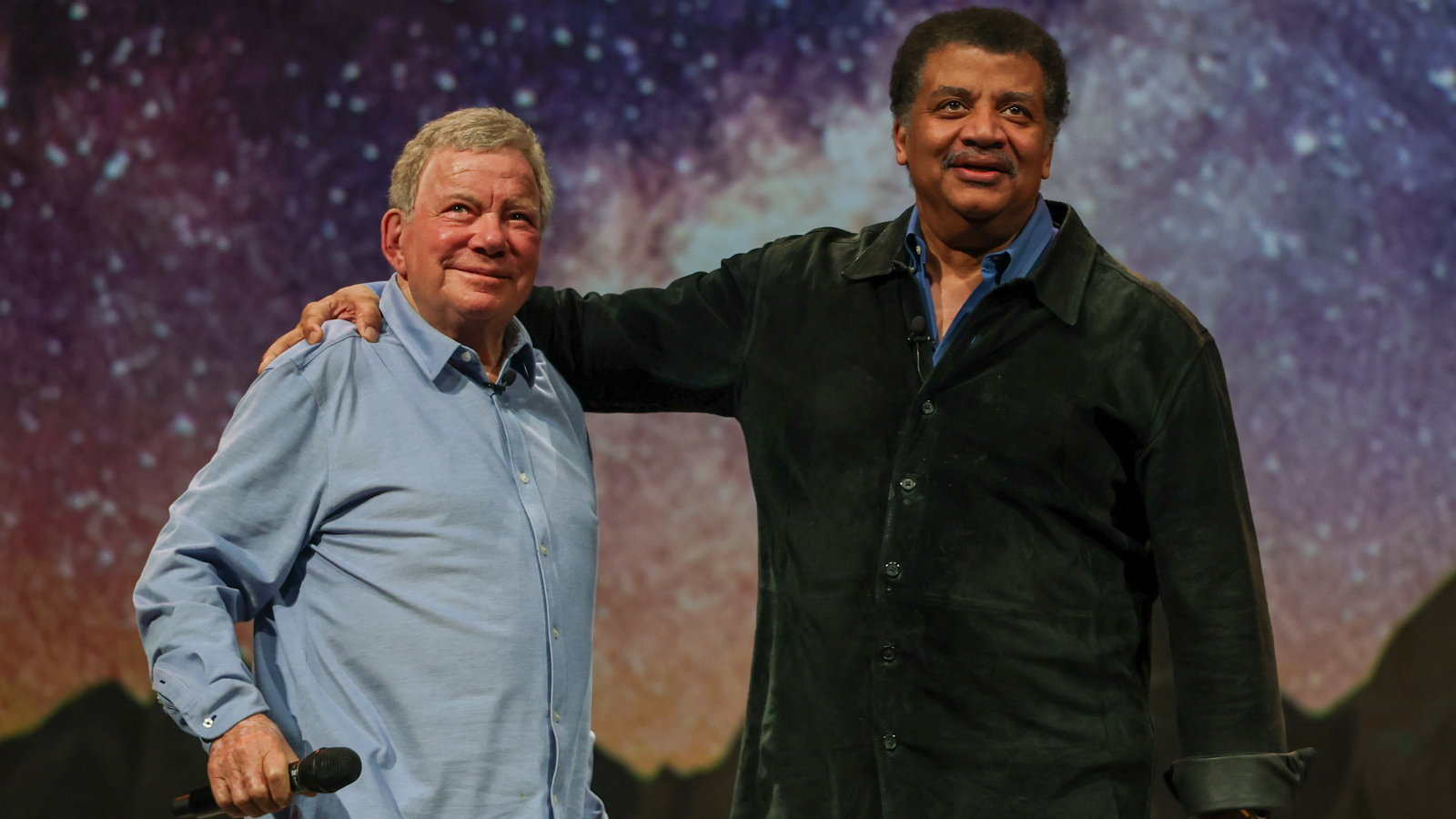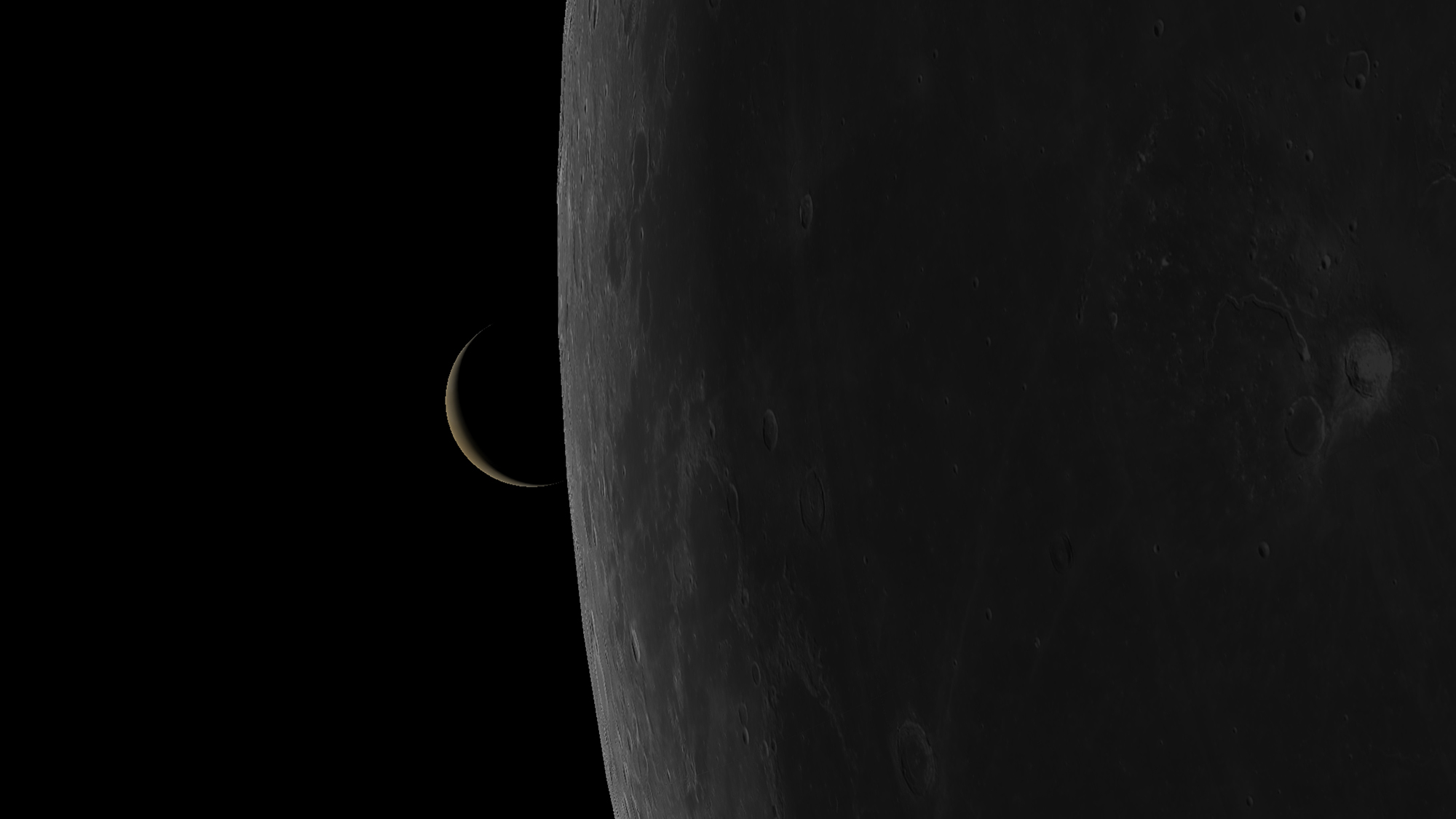
If you live in a portion of northern and eastern New York State, New England or the Maritime Provinces of Canada, mark Friday, June 19, on your calendar. That morning the moon will rise with the brilliant planet Venus hidden behind it.
Shortly after the moon clears the east-northeast horizon, Venus will dramatically emerge into view, the end of what astronomers refer to as an "occultation." Both objects will be crescents at the time, the moon being 4% and Venus 8% sunlit, adding to the beauty of the event for those having small telescopes.
But what if you live elsewhere? It still will be worthwhile setting your alarm clock for about an hour before sunrise to have a look. Rather than partake of the usual "inside the eyelid show" at that somewhat ungodly hour, you will be rewarded instead with a view of a beautiful celestial rendezvous as a slender crescent moon appears in close proximity to the brightest planet in our sky.
Related: Best night sky events of June 2020 (stargazing maps)
Related: Moon phases
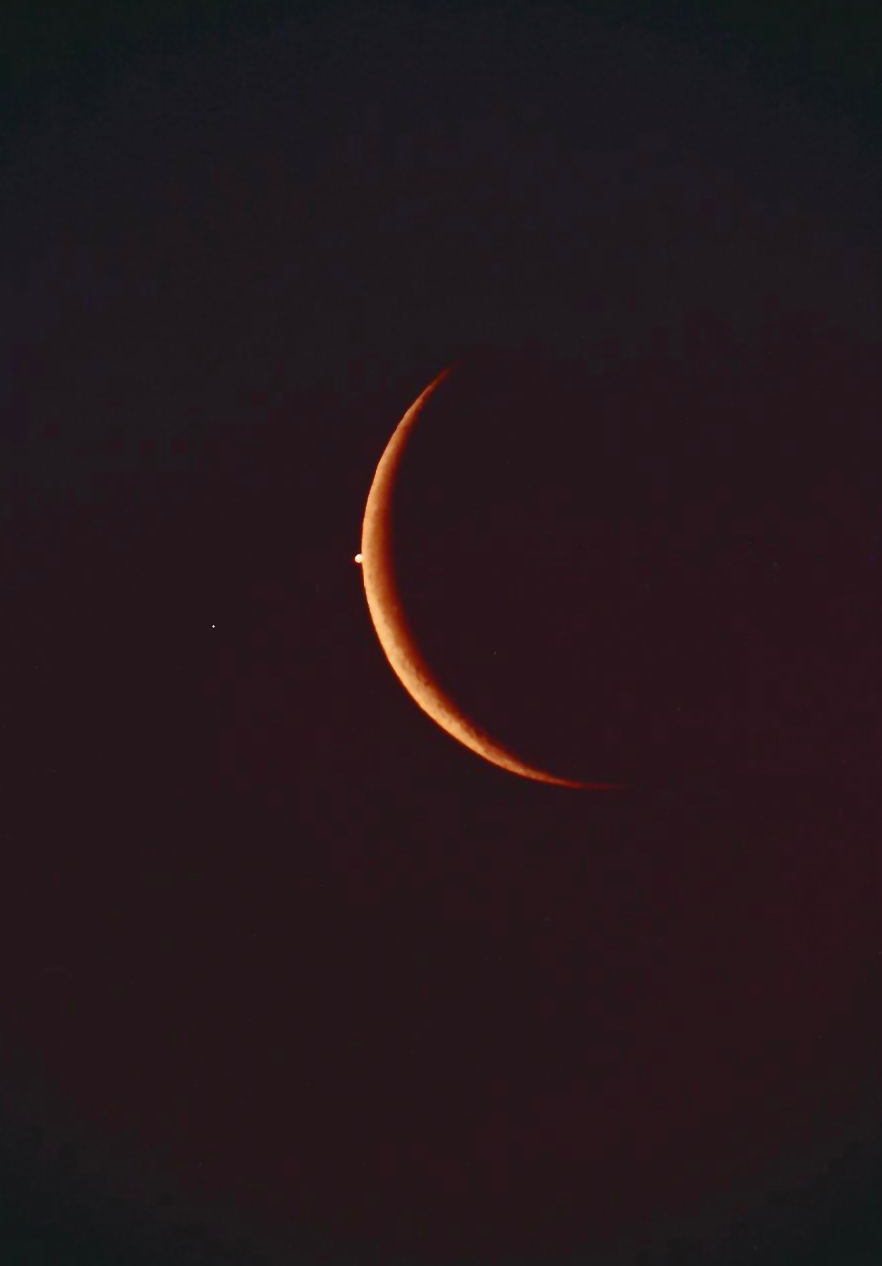
Is it a plane ... or UFO?
Early risers who are normally up an hour or so before sunrise, and who are unaware or have no advance notice, will almost certainly wonder, as they cast a casual glance toward the skinny moon that morning, what that "large silvery star" happens to be. Sometimes, such an occasion brings with it a sudden spike of phone calls to local planetariums, weather offices and even police precincts. Not a few of these calls excitedly inquire about "the UFOs" that are hovering closely in the vicinity of Earth's natural satellite.
Since these are the two brightest objects in the sky aside from the sun, the view will be spectacular even to the unaided eye. Binoculars will better the scene. Venus' first appearance on the dark side will be most spectacular; its crescent will not reappear suddenly, but will take about 10 seconds to swell into full brilliance. When the planet emerges, it will first come into view as a star-like point that quickly enlarges into a crescent.
Breaking space news, the latest updates on rocket launches, skywatching events and more!
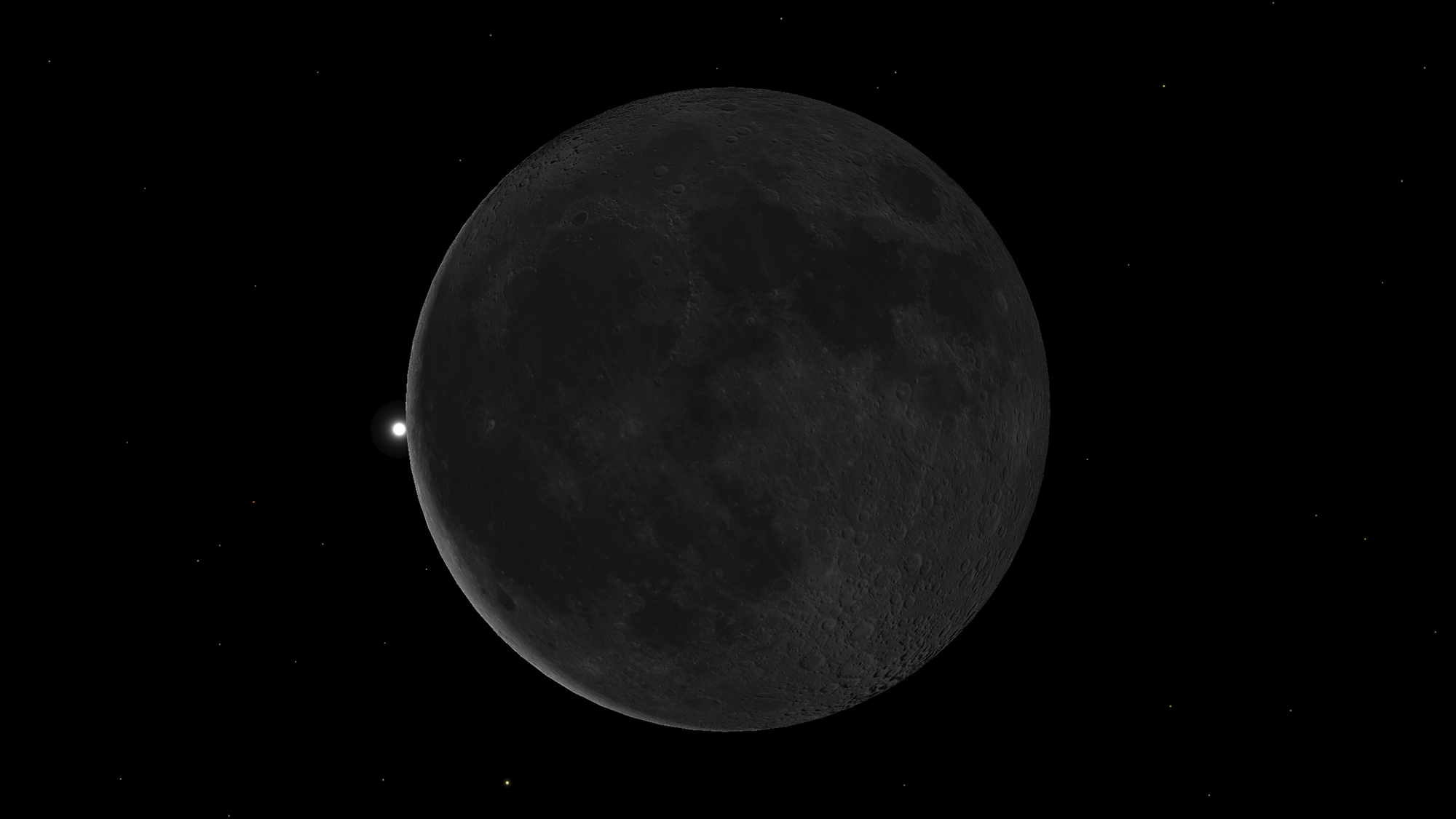
If, however, twilight is well advanced (as will be the case in Maine), give yourself plenty of time to find the moon, because its low surface brightness against the sky may make it hard to see. Initially, even just after sunrise, Venus' brilliance should make it quite obvious. But as the moon recedes from Venus, the planet will seem to fade into the growing expanse of day. For the rest of the day Venus and the moon can be seen together in binoculars.
Online timetable
Specifics regarding the circumstances of the occultation can be gleaned from information freely provided by the International Occultation Timers Association (IOTA). A webpage has been set up for this event, which includes a map depicting the region of visibility as well as a table providing viewing times for 38 cities in the United States and Canada.
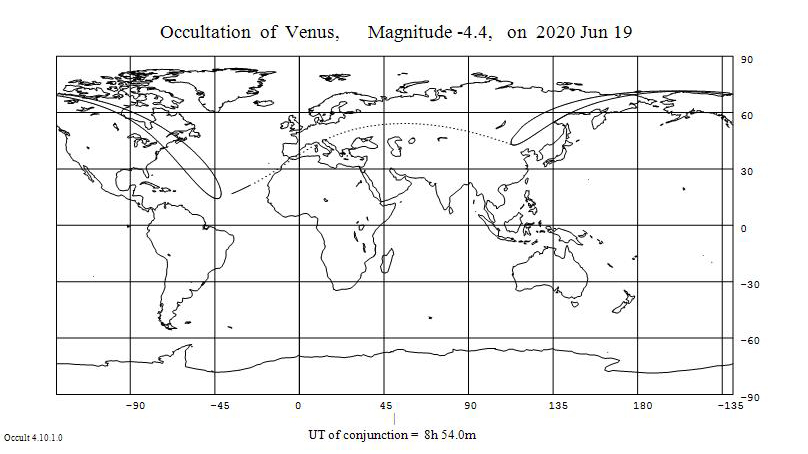
A line drawn from Watertown, New York to Riverhead, New York marks the boundary zone for the emergence of Venus at moonrise. Anywhere to the left (west) of this line will have the moon emerge from above the east-northeast horizon with Venus in view just to the upper right of the moon. That will be what most of the U.S. and Canada will see.
But those positioned in the "sweet spot" to the right (east) of the line, will be treated to the end of this "Venus eclipse."
Farther to the northeast, across the Gaspé Peninsula of Quebec, Prince Edward Island and the eastern half of Nova Scotia, the entire occultation will be visible from start to finish. Venus will disappear behind the slender lunar crescent shortly after moonrise and will reappear from behind the dark limb about an hour later at, or shortly before sunrise. For this reason, four of the 38 locations listed by IOTA also include times of disappearance.
| Location | Universal Time | Sun Alt. | Moon Alt. | Moon Az. |
|---|---|---|---|---|
| Alert, Nunavut | 8:21:45 | 20° | 18° | 84° |
| Charlottetown, Prince Edward Island | 7:21:48 | -9° | 1° | 63° |
| Saint John's, Newfoundland and Labrador | 7:19:03 | -3° | 7° | 70° |
| Sydney, Nova Scotia | 7:20:06 | -7° | 2° | 65° |
| Location | Universal Time | Sun Alt. | Moon Alt. | Moon Az. |
|---|---|---|---|---|
| Alert, Nunavut | 9:07:51 | 21° | 19° | 95° |
| Augusta, Maine | 8:08:40 | -7° | 3° | 67° |
| Boston, Masachussetts | 8:06:55 | -10° | 1° | 66° |
| Charlottetown, Prince Edward Island | 8:09:31 | -2° | 8° | 72° |
| Concord, New Hampshire | 8:07:59 | -9° | 1° | 66° |
| Halifax, Nova Scotia | 8:07:39 | -4° | 7° | 71° |
| Montpelier, Vermont | 8:09:27 | -9° | 1° | 65° |
| Montreal, Quebec | 8:11:04 | -8° | 2° | 65° |
| Providence, Rhode Island | 8:06:29 | -10° | 1° | 65° |
| Quebec City, Quebec | 8:11:48 | -6° | 4° | 67° |
| Saint John's, Newfoundland and Labrador | 8:10:54 | 4° | 16° | 80° |
| Sydney, Nova Scotia | 8:09:04 | -1° | 10° | 74° |
All times are listed in Universal Time (UT). To convert to Eastern Daylight Time, subtract 4 hours; to Atlantic Daylight Time, subtract 3 hours and for Newfoundland Daylight Time, subtract 2 and a half hours.
"Sun Alt" denotes the altitude of the sun in angular degrees. If the sun is below the horizon, this value will be negative. "Moon Alt" denotes the altitude of the moon in angular degrees. From everywhere within the occultation viewing zone, the moon will be very low in the sky. Its azimuth ("Az") is the direction from the observer, expressed as the angular distance measured eastward from the north point of the horizon — will be somewhere between 65 degrees and 71 degrees, or expressed another way, between 19 degrees and 25 degrees north of due east.
Here's an example: When will Venus reappear from behind the moon's dark limb as seen from Boston?
Boston is listed as city number 4. Reappearance is predicted for 8:06:55 UT. Converted to Eastern Daylight Time gives 4:06:55 a.m. The sun will be 10 degrees below the horizon; that is considered to be mid-twilight. The moon's altitude will be just a scant 1 degree, and it will be located on the horizon at an azimuth of 66 degrees, or 24 degrees north of due east. Bostonians will either need a clear and unobstructed view looking out over the Bay, or a high vantage point above any possible obstructions.
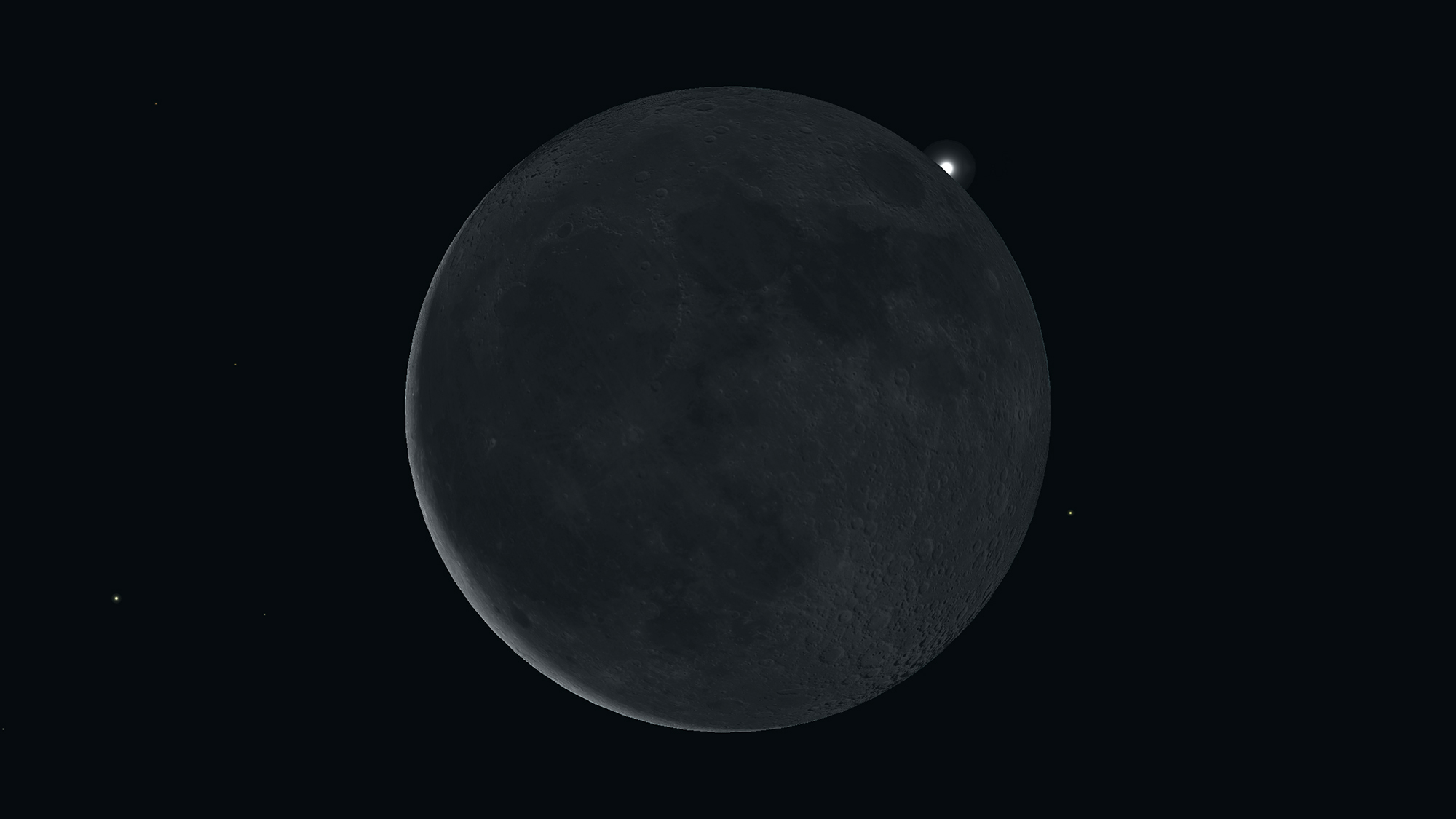
How frequent are occultations?
"Nocturnal" (pre-sunrise or post-sunset) occultations of Venus are unusual events. In July 1974, after just such an occultation took place over the eastern U.S., The New York Times reported that: "Although the frequency of the phenomenon has not been calculated, it is believed to be as rare an event to be visible from a given spot on the earth as is a total eclipse of the sun. On the average, solar eclipses are visible from any one point once every 360 years."
But in 2011, the well-known Belgian astronomer Jean Meeus and I co-wrote a paper in the Journal of the British Astronomical Association in which we finally were able to provide an answer to the frequency of such an event. As it turns out, "nocturnal" occultations of Venus occur much more frequently than originally thought. For a case in which only the emergence of Venus occurs with the sun below the horizon, the mean frequency is once in 21 years. For the entire occultation — both the disappearance and reappearance with the sun below the horizon — the mean frequency is once in 31 years.
The last time a "nocturnal" occultation was widely visible from the Northeast US and adjacent parts of Canada was before sunrise on Dec. 26, 1978. The next opportunity will come, again before sunrise, on Sept. 13, 2031.
Editor's Note: If you snap an amazing night sky picture and would like to share it with Space.com's readers, send your photos, comments, and your name and location to spacephotos@space.com.
- Watch Mars 'sneak' behind the crescent moon in these amazing views (video)
- Capturing Venus: an amateur astronomer's famous moon shot
- Moon appears to eat Venus in new photos
Joe Rao serves as an instructor and guest lecturer at New York's Hayden Planetarium. He writes about astronomy for Natural History magazine, the Farmers' Almanac and other publications. Follow us on Twitter @Spacedotcom and on Facebook.
OFFER: Save 45% on 'All About Space' 'How it Works' and 'All About History'!
For a limited time, you can take out a digital subscription to any of our best-selling science magazines for just $2.38 per month, or 45% off the standard price for the first three months.
Join our Space Forums to keep talking space on the latest missions, night sky and more! And if you have a news tip, correction or comment, let us know at: community@space.com.

Joe Rao is Space.com's skywatching columnist, as well as a veteran meteorologist and eclipse chaser who also serves as an instructor and guest lecturer at New York's Hayden Planetarium. He writes about astronomy for Natural History magazine, Sky & Telescope and other publications. Joe is an 8-time Emmy-nominated meteorologist who served the Putnam Valley region of New York for over 21 years. You can find him on Twitter and YouTube tracking lunar and solar eclipses, meteor showers and more. To find out Joe's latest project, visit him on Twitter.

